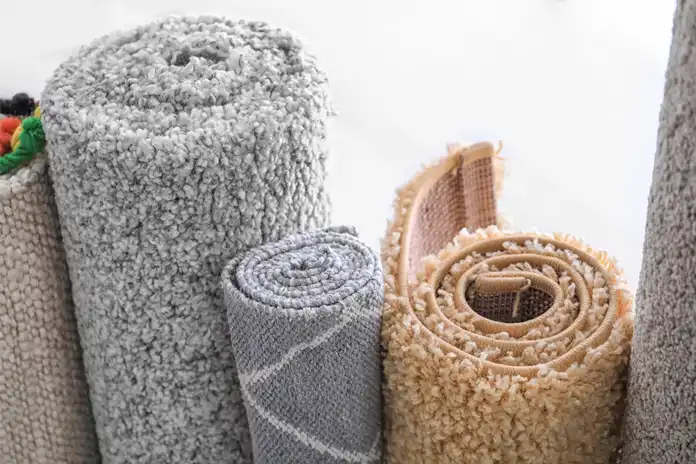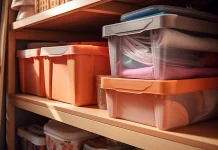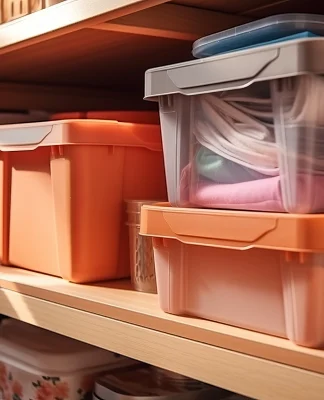Rugs and carpets add a great sense of warmth to any room, but they take up a lot of space when they’re not in use. While it might seem like all you need to do is roll them up and set them in a corner somewhere, it takes a bit more work than that. Even so, the logistics required to store a rug might not seem like important details, but they make a huge difference. Over time, improperly stored rugs can develop creases, lose their shape, become infested with pests, and act as a breeding ground for mold or mildew. Luckily, if you want to store your rug, all it takes is following a few simple steps and being proactive about your storage solutions. To help you learn more about preparing your rug for storage, we’ll go over 9 tips to keep your rug in good condition over the years.
9 Tips to Store Rugs and Carpets So They Remain in Great Condition
Understanding how to keep carpets and rugs clean and in good condition can be a bit confusing, especially if you’re trying to find a way to store large area rugs or delicate oriental rugs. While you’ll likely want to enjoy them in your home, there are several reasons you may want to get a rug or carpet ready for storage. Maybe you’re transitioning to a new home and don’t have the space, or maybe you want to keep more expensive rugs safely tucked away during a transitional period. Whatever the reason, here are some essential rug storage tips.
1. Thoroughly Clean the Rug According to the Manufacturer’s Instructions
Cleaning your rug before storing it is essential. Regardless of how long you need to store your rug, cleaning it will help reduce the risk of further deterioration while making sure any temporary stains don’t set. Since fibers in carpets and rugs hold on to dander and dirt like a magnet, foregoing cleaning can lead to issues if you plan to store your rug long-term. Always check with the manufacturer’s instructions first, as cleaning a shag carpet is going to require a different approach than oriental rugs. Generally speaking, you’ll probably want to vacuum the rug first to lift dust, dirt, and dander. Then, choose one of the different cleaning methods based on the materials and delicacy of the rug. Make sure you take extra care of handmade or antique rugs to avoid damaging them in the process. When you’re done, lay it flat and let it sit to allow the rug to dry thoroughly and completely. Any lingering moisture in the rug can cause mildew or mold growth.
2. Keep Pests At Bay
Before you put your rug into a storage space, it’s important to take measures to reduce the risk of insects, moths, and vermin. One of the best ways to do this is to use an insect and moth repellent made for sensitive fabrics. You can cover the carpet or rug in this repellent and let it dry before moving on to the next step. Additionally, you may want to avoid storing your rug in a basement if it’s not finished to help decrease the risk of moths and insects.
3. Roll Up Your Carpet or Rug With the Grain
Another great tip is to roll the rug instead of folding it. When you fold a rug, you increase the risk of creases and cracks. Regardless of what type of material it’s made from, it’s better to roll the rug for storage. In fact, professionals recommend never folding a rug or carpet. Roll a rug with the pile facing inward along the grain for the best results. Rolling against the grain can lead to creases and distortions in the rug’s shape. Start from one end and roll it tightly (but not too tightly) to avoid unnecessary stress on the fibers. If you’re having trouble doing this, you can use a rod to help keep things straight.
4. Consider a Rug Storage Bag
Never use plastic to wrap your rug, as it’s not breathable and can trap moisture, which contributes to several issues. If you wrap a rug in plastic, you may unroll it and find the fibers completely covered in mold and ruined. Instead, consider using a rug storage bag or another type of breathable fabric. A plain cotton sheet will do just fine as long as you roll it around the rug about one and a half times or more. This will make sure it’s secured along the rug so that it stays in place when you get to the storage area.
5. Always Store the Rug Vertically
The best way to maintain the shape and integrity is to store a rug standing up. You can prop it against a corner or secure it in place using ties or bungee cords. Make sure the rug is secured if it’s going to be in a storage unit with other items, as if it falls over, it could cause damage to other belongings. Laying it flat can cause rugs to lose shape, and if heavy items fall on top of them, they can result in a permanent crease indent.
6. Try to Keep the Rug Off the Ground
You’ll also want to learn how to store rugs off the ground in your storage unit. This will help protect the rug properly from moisture or other potentially harmful elements. For example, if there’s flooding in your storage area, the water can seep into the bottom of the rug and slowly ruin the fabrics from one side up. Elevate the floor of your storage unit using shelving units or pallets to help keep rugs in good condition over the years.
7. Keep Storage Conditions Dark
Once the rug is rolled up and protected, don’t place it in direct sunlight. Light can fade the rug’s colors over time, and direct sunlight can expedite this process. Instead, try to find a dark area that has consistent temperatures. The best option is to find a storage unit that can accommodate the size of your rug easily.
8. Store in a Climate-Controlled Storage Unit
Fluctuating temperature and humidity can cause several issues. It can attract pests and increase the risk of mold growth, causing your rug to degrade while tucked away in storage quickly. The best way to make sure that your rug stays in good condition is to place it in a temperature-regulated area. Proper storage facilities will offer climate control, which is the most ideal option when storing a variety of household items.
9. Regularly Unroll and Inspect
Once you’ve tucked away your rug or carpet in a climate-controlled storage unit, take some time to unroll it regularly and make inspections. Ideally, you’ll want to do this once every month. However, if you’re adhering to proper storage conditions, you may be able to go a little longer. For expensive rugs, it’s best to start with one month to be sure. Look for any sign of pests, moisture damage, or distortions in shape. You may also want to consider rotating which way it’s stored by flipping it vertically every now and then to help equalize wear and tear.
To ensure your rugs and carpets stay in great condition, consider renting a storage unit. At the Lock Up Self Storage, our climate-controlled self-storage units are perfect for all your furniture storage needs. We offer a variety of self-storage units in varying sizes to ensure all of your belongings fit without having to stack everything from floor to ceiling. With flexible leasing options, you can use our self-storage for as long as you need, whether short-term or long-term. Our facilities have top-of-the-line security features like perimeter alarms, gated access codes, and 24/7 CCTV. To learn more about our self-storage units at The Lock Up, give us a call today at 1-866-327-LOCK or stop by one of our locations for a tour of the facility.



















